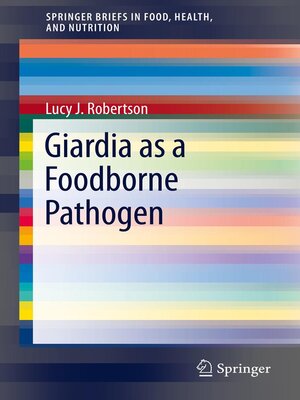Giardia as a Foodborne Pathogen
ebook ∣ SpringerBriefs in Food, Health, and Nutrition
By Lucy J. Robertson

Sign up to save your library
With an OverDrive account, you can save your favorite libraries for at-a-glance information about availability. Find out more about OverDrive accounts.
Find this title in Libby, the library reading app by OverDrive.



Search for a digital library with this title
Title found at these libraries:
| Library Name | Distance |
|---|---|
| Loading... |
Although widely recognized as an important waterborne pathogen, Giardia duodenalis can also be transmitted by contamination of food. The same properties of this protozoan parasite that mean that water is an excellent transmission vehicle are also important for foodborne transmission. These include the low infective dose, the high number of cysts that are excreted, and the robustness of these transmission stages. However, many more outbreaks of waterborne giardiasis have been reported than foodborne outbreaks. This is probably partly due to epidemiological tracing being much more difficult for foodborne outbreaks than waterborne outbreaks, and the number of persons exposed to infection often being fewer. Nevertheless, the potential importance of foodborne transmission is gradually being recognized, and a wide range of different foodstuffs have been associated with those outbreaks that have been recorded. Additionally, various factors mean that the potential for foodborne transmission is becoming of increasing importance: these include the growth of international food trade, a current trend for eating raw or very lightly cooked foods, and the rise in small-scale organic farms, where there the possibility for contamination of vegetable crops with animal faeces may be greater.







